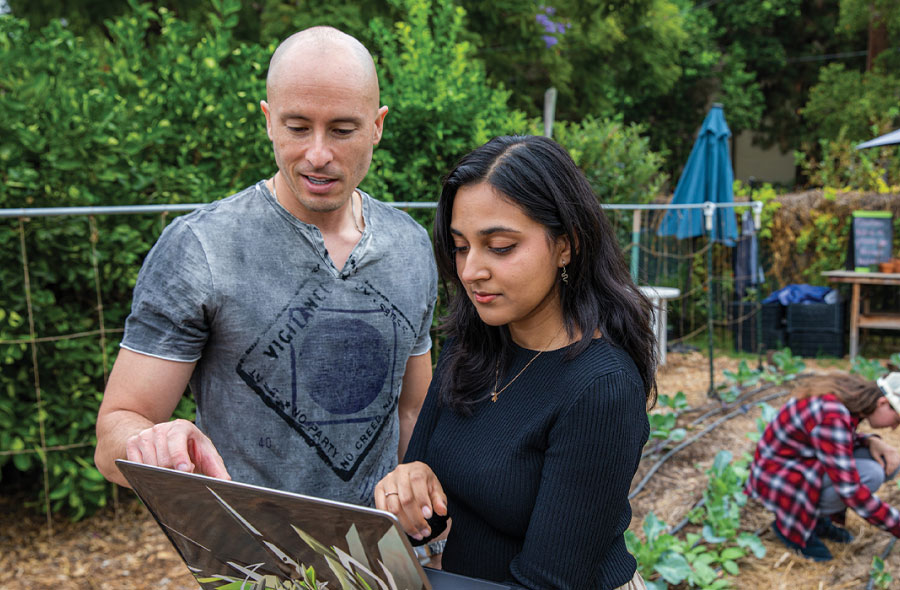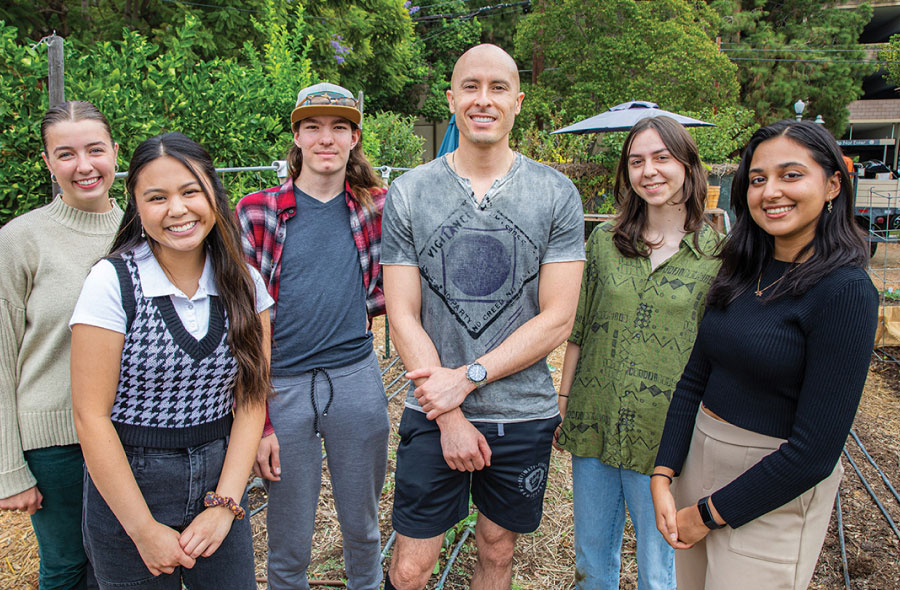
A breakthrough predictive model applies tipping point theory, shifting the balance toward more efficient delivery of famine relief in vulnerable regions.
“No one has done this before – let’s check it out.”
That’s how Chapman University Presidential Fellow Joshua B. Fisher describes the inspiration for his research projects using soil-moisture readings and other data, reflecting a process that has helped the scientist become one of the most cited researchers in the world.
Now his latest unique exploratory project has yielded results Fisher says “could be a gamechanger for global food security.”
Going forward, the scientific advance may allow nations, the UN and humanitarian aid organizations to more efficiently direct resources to areas of drought and famine before those regions tip into full-blown crisis.
“Do you know what this means?” Fisher recalls saying to his former student and lead author Krishna Krishnamurthy at the moment the two realized their model had achieved its predictive potential. “We can now predict 100% of food crashes and recoveries three to six months ahead of time. This is going to save lives.”
Existing predictive systems fail to anticipate many crises, resulting in loss of lives and resources, the researchers said. Droughts are the source of two-thirds of those misses.
Applying Tipping Point Theory to Food Security
“We can now predict 100% of food crashes and recoveries three to six months ahead of time. This is going to save lives.”

Tipping Point Theory is used to identify when dynamic systems experience incremental change that tips them into another state.
“The project really took off when we found that Tipping Point Theory can be applied to food security,” said Fisher, who, in addition to Krishnamurthy, is joined by Richard J. Choularton and Peter M. Kareiva as co-authors on the paper.
Tipping Point Theory is used to identify when dynamic systems experience incremental change that tips them into another state.
“It’s usually applied to really big climatic things. Like that the Sahara Desert once was all vegetated and now it’s not, or there were huge amounts of Arctic ice and now there aren’t,” Fisher said. “Except in this case, we’re able to predict a recovery, which won’t be happening in the Sahara.”
The other key component of the model is data from a NASA satellite mission called Soil Moisture Active Passive (SMAP), which has been providing soil moisture information since 2015. Food security crises identified by SMAP and plotted on the team’s research dashboard range from Guatemala to Ethiopia, Cambodia to Mozambique.
“We analyzed drought-induced food crises globally in the SMAP record – about five per year,” the researchers say in their paper, titled “Anticipating Drought-Related Food Security Changes.”
“The change in soil moisture autocorrelation … signaled an accurate food security transition for all cases studied, including lead time of up to three to six months for every case. The SMART trigger anticipates the timing of the transition and the magnitude of the food security change among small to large transitions, both into and out of crises.”

The chance to mentor students throughout novel research explorations helped attract Earth systems scientist Joshua B. Fisher to Chapman, where he’s aided by students such as Radhika Puri ‘25 and Ben Jensen ‘24.

“Results like these drive you,” says Fisher, here meeting with students at the Orange Home Grown Education Farm near the Chapman campus.

Uncertainty can affect humanitarian response

Reliable early-warning data are a driver of funding for humanitarian response to food security crises, said Krishnamurthy, who works for the UN World Food Programme as an anticipatory action and planning coordinator.
“Donors don’t always want to invest in a setting of uncertainty,” he said. “But if we can show that we’re getting really high levels of accuracy in our model, that will improve the confidence in the data and in the recommendation to act. Investing in early action and not just after the fact is critical.”
“Investing in early action and not just after the fact is critical.”
It takes about four to eight weeks to mount an emergency response to a food security crisis, Krishnamurthy said. So the chance to prepare for a famine three to six months in advance rather than reacting as many as eight weeks after systems have tipped into crisis is an exciting prospect, the researchers said.
Since their paper was published, they have received outreach from a number of actors who support humanitarian interventions, including the World Bank, “which is quite encouraging,” Fisher said.

Fisher’s ongoing research projects feature substantive roles for Chapman students, including (from left) Holland Hatch ‘25, Kristiene Jumig ‘23, Ben Jensen ‘24, Zoë von Allmen ‘23 and Radhika Puri ‘25.
One next step for the food security predictive model will be finding a way to more effectively account for the influence of conflict and regime change in a region.
“Our model doesn’t do a good job of predicting wars – at least not yet,” Fisher said.
It’s no surprise that there have been many ups and downs during the five-year history of the project, which began when Fisher was a scientist at NASA Jet Propulsion Laboratory and Krishnamurthy was his doctoral student. They continued their investigations from when both were at Oxford University, and the project has now reached new heights since Fisher joined Chapman in 2021.
The chance to mentor students throughout novel research explorations is a key factor that attracted Fisher to Chapman and its teacher-scholar model.
“Results like these drive you,” said Fisher, who ranks in the top 1% of scholars for his citations, according to scientific research service Clarivate. That puts him on a list with 24 Nobel laureates.
 Photos by Adam Hemingway
Photos by Adam Hemingway
